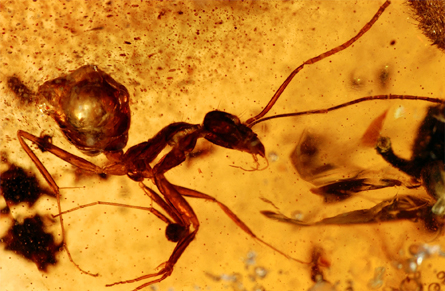India yields fossil trove in amber
Insect remains suggest surprising diversity 50 million years ago
- More than 2 years ago
A 52-million-year-old ant is just one of a rich collection of fossils found in newly discovered amber deposits from western India. The fossil trove includes bees, ants, gnats, flies, termites and other insects typical of the Eocene period, paleontologists report October 25 in the Proceedings of the National Academy of Sciences.
The collection is more diverse than might be expected, writes a team led by Jes Rust of the University of Bonn in Germany and David Grimaldi of the American Museum of Natural History in New York City. At the time the amber formed, India was just ending a long period of isolation: The tectonic plate carrying it had separated from Madagascar around 40 million years earlier and was on the verge of the collision with the Asian plate that would eventually give rise to the Himalayas.
India’s 40-million-year isolation might have restricted biological diversity the way that Australia’s does today, the scientists say. Yet the amber contains a relatively wide range of species, suggesting instead that continental isolation does not always lead to biological sparseness.








